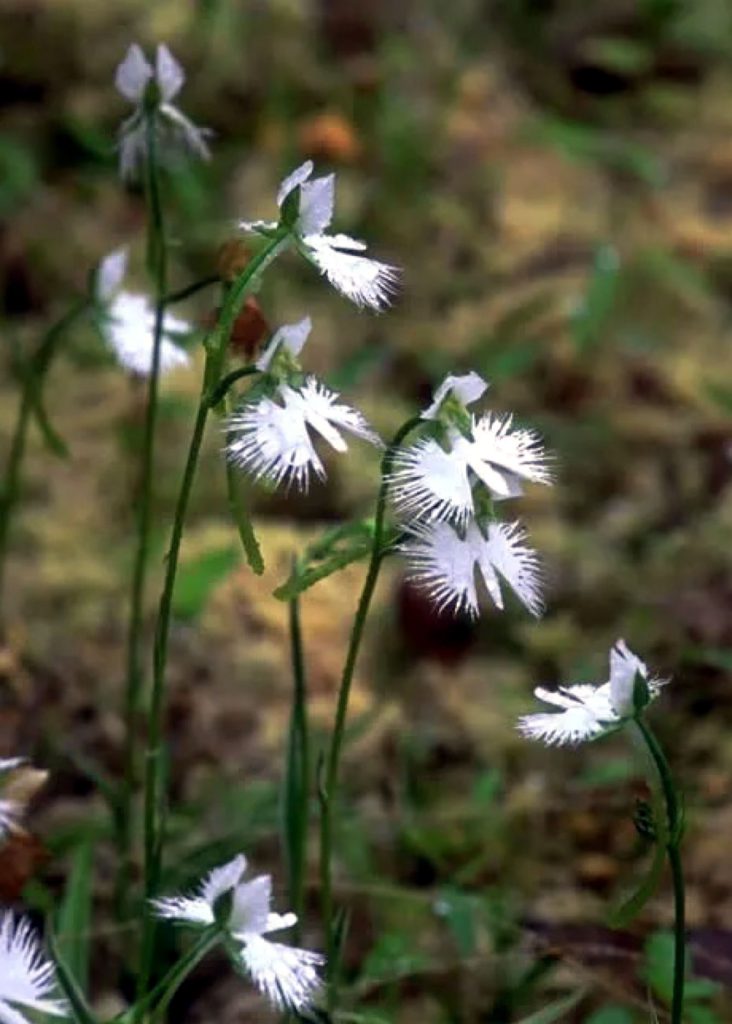
White Sagi-so (Egret flowers), which were once commonly found in small wetlands and mountains, are now rarely seen. The wetland environment preferred by Sagi-so has been destroyed by land development, and it has been designated as a near-threatened species. Once upon a time, after traveling vertically in the Southern Alps, I was impressed to see the Sagi-so flower that really danced like an egret in the cool breeze that blows through the valley in the wetlands around Ina Valley. The area around Ina-dani is where the legend of the Heike deceased remains, and at a small shrine in the village, there was a red flag written with Kiyomori or Shigemori. In the village of “Ura” in Hase, Ina City, there is a tomb of Taira no Kiyomori’s firstborn, Taira no Shigemori. Shigemori was called Komatsu-dono in Kyoto, so I heard that there are many Komatsu surnames in the “Ura” and nearby villages. The white Sagi-so is Genji, the red flag is Heike, and strangely, Genpei’s deceased survived in Ina Valley.
かつてはちょっとした湿地帯や山あいに普通に見られたサギソウも、今では滅多なことでは見られなくなりました。サギソウの好む湿地環境が土地の開発などで壊され、準絶滅危惧種に指定されているほどです。昔、南アルプスを縦走しての帰り、伊那谷辺りの湿地帯で、谷を吹き抜ける涼しい風に、本当にシラサギのように舞うサギソウを見て感動したことがあります。伊那谷辺りは平家の落人伝説の残る地で、村の小さな神社には、清盛とか重盛とか書かれた赤い幟が立っていました。伊那市の長谷の「 浦 」という集落には、平清盛の嫡男、平重盛の墓があるそうです。重盛は、京都では、小松殿と呼ばれていたので、「浦」の部落や近くの部落には小松姓が多いと聞きました。サギソウの白は源氏、赤い幟は平家、奇しくも源平の落人が伊那谷に生き延びたわけです。
